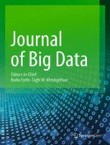2022 Citation Impact
8.1 - 2-year Impact Factor
5.095 - SNIP (Source Normalized Impact per Paper)
2.714 - SJR (SCImago Journal Rank)
2023 Speed
56 days submission to first editorial decision for all manuscripts (Median)
205 days submission to accept (Median)
2023 Usage
2,559,548 downloads
280 Altmetric mentions

